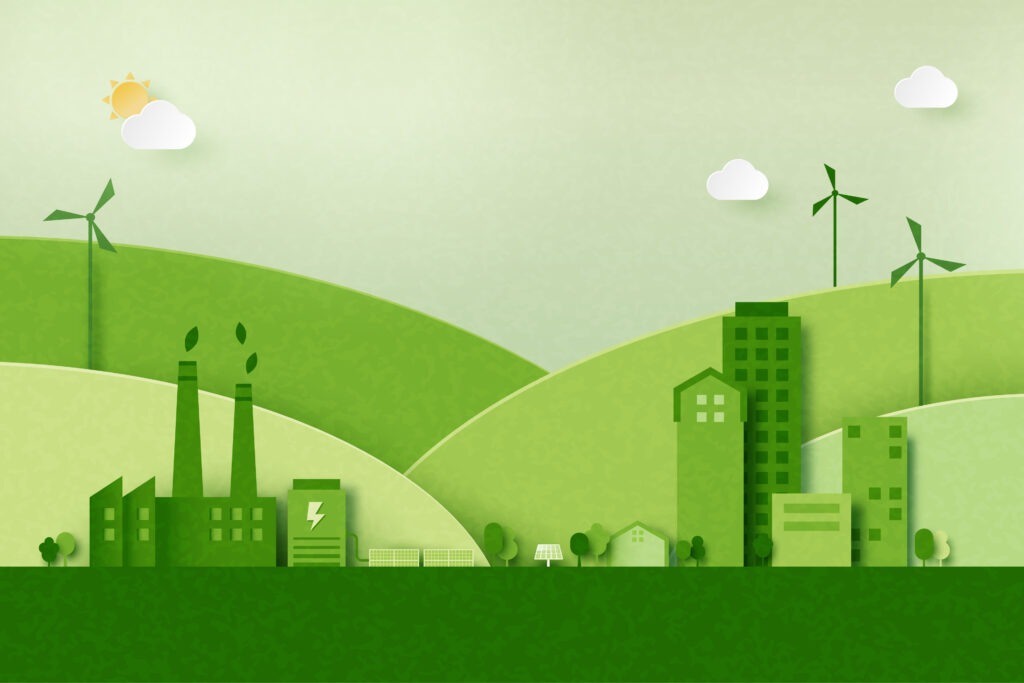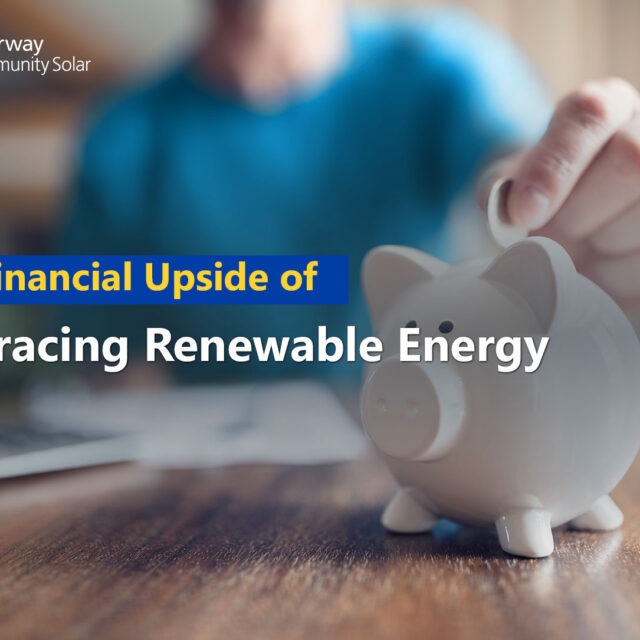
Urban development is taking place at rates higher than ever before, and since cities consume 80% of global energy produced and are responsible for about 70% of global greenhouse gas emissions, it makes sense that many cities and local governments are building more green communities and focusing on sustainable development goals.
Adding more sustainable cities and communities to the map brings the world closer to making major progress in slowing the current rate of climate change and biodiversity loss. The scattered cities that are leaders in sustainability across the globe today have the potential to be catalysts for a one-day sustainable planet.
What Does it Mean to Be a Sustainable City?
A truly sustainable city uses resources tactfully to meet the needs of its population. This not only helps reduce the city’s overall carbon footprint and environmental impacts but also improves the quality of life for all residents.
In general, for cities to be considered sustainable, they will:
- Be self-sufficient in energy production and usage
- Use mostly renewable energy and very little fossil fuels
- Have low carbon emissions
- Be a near-zero-waste community that uses waste to produce energy
- Have sustainable public transportation options that are used by a high percentage of the city’s population
- Ensure the city can be easily navigated by bicycle
- Maintain green spaces that are integrated into city infrastructure, some of which may also be used for energy production (e.g. pollinator-friendly solar gardens or solar trees mixed with natural vegetation)
- Encourage models of local purchasing and support local trade
- Sustainably manage natural resources
Urban sustainability goals like these are accomplished through urban planning and management, with the help of advancements in green technology. It’s important to also note that local governments cannot be solely responsible for making a city sustainable. It is also up to businesses, organizations, universities, and individuals within the community to implement sustainability goals, fair practices, and living wages to make these improvements possible for the community as a whole.
How Common Are Green Cities in the U.S.?
Ultimately, the answer depends on how sustainability is determined for a city. In one instance, a 2022 study done by SmartAsset compared 94 of the largest U.S. cities across three categories: transportation, green efficiency, and climate resilience.
The study found that only 18 of those 94 U.S. cities have more than 100 green buildings per 100,000 people. For context, green buildings are designed to improve environmental quality, health, and efficiency. To be considered a “green building,” a building must meet LEED certification standards set by the U.S. Green Building Council (USGB).
10 of the Most Sustainable Cities in the U.S.
A 2023 study conducted by WalletHub compared the 100 largest cities in the U.S. across 28 key indicators. Those key indicators included sustainable transport, energy sources and renewable energy commitments, environmental initiatives, sustainable lifestyles, urban planning, green spaces, and more.
These are the 10 most sustainable cities in the United States:
- San Diego, CA: As the greenest city on the list, San Diego is powered by about 40% renewable energy, according to Green City Times. San Diego is also a national leader in solar power production and is committed to reducing greenhouse gas emissions.
- Honolulu, HI: In 2020, Honolulu passed a bill, committing to transition to 100% renewable energy and become carbon neutral by 2045. Also, according to Honolulu’s 2023 Annual Sustainability Report, the city continues to use less and less electricity each year, with a 3.4% decrease in 2023.
- Portland, OR: According to Urban Green-Blue Grids, nearly half of Portland’s energy comes from renewable sources and a significant fraction of the workforce uses public transit, bikes, or a carpooling service. Plus, it states “35 buildings are certified by the US Green Building Council” and there are more than 200 buildings with green roofs.
- Washington D.C.: Sustainability in the nation’s capital is all about the buildings. In 2017, Washington D.C. became the USGB’s first LEED Platinum City in the World, meaning many of its buildings use 40 percent less energy per square foot than the base building code requirement.
- Seattle, WA: Seattle’s main utility provider, Seattle City Light, became the first electric utility in the country to achieve zero net greenhouse gas emissions — that was in 2005. Today, Seattle City Light generates more than 80% of its power from hydroelectric sources, according to the American Council for an Energy-Efficient Economy.
- San Jose, CA: As a leader in climate-forward policy, San Jose adopted an initiative called Climate Smart San Jose, making it one of the first U.S. cities to develop a plan for achieving the goal of greenhouse gas reductions set in The Paris Agreement. The initiative does this by focusing on three areas: energy, mobility, and water.
- San Francisco, CA: This city is all about recycling. An impressive 80% of its waste is diverted from landfills and recycled or composted. In fact, San Francisco is home to America’s first urban food-waste and compost system, which provides compost to local farmers for food production.
- Oakland, CA: Along with being a highly walkable city, Oakland offers an extensive public transit system and many green buildings. The city even offers low-interest loans for eco-friendly residential and commercial projects. Plus, Oakland has set high goals, looking to become carbon-neutral by 2045.
- Fremont, CA: In October 2023, Fremont announced its new climate action plan called Climate Ready Fremont, which contains a series of plans and climate adaptation measures to reduce local greenhouse gas emissions by the year 2030.
- Minneapolis, MN: According to the U.S. Energy Information Administration, “renewables accounted for 31% of total in-state electricity net generation” in Minneapolis in 2022. Plus, this midwestern city offers a great biking program, public transportation system, and many green spaces and parks.
It’s important to note that different factors and alternative methodologies for sustainability rankings like this can lead to different outcomes. For that reason, you may see other studies conducted by other organizations that have slightly different rankings.
Nation-Wide Progress Towards Sustainability
The National Environmental Policy Act (NEPA), signed into law by President Richard Nixon in 1970, states that Americans should “use all practicable means and measures … to create and maintain conditions under which man and nature can exist in productive harmony and fulfill the social, economic, and other requirements of present and future generations of Americans.”
Since NEPA was signed in 1970, America has passed several laws to move the country towards a more eco-friendly and sustainable future. However, the most substantial climate law ever enacted in the U.S. happened just last year. The US Inflation Reduction Act of 2022 (IRA) provides investments to encourage clean energy, climate resilience, environmental justice, clean air, jobs in clean energy, and more. Several analyses have found that when combined with current policies already in place, the IRA will cut America’s greenhouse gas emissions in 2030 by about 40% from its 2005 peak.
In addition to those goals, as part of the Biden administration, the U.S. also announced the EV Acceleration Challenge, which set a goal to make 50% of all new vehicle sales be electric vehicles by 2030.
Despite the United States taking action and making progress, the country is still behind in sustainable urban development compared to many other developed countries. In a 2023 review of national efforts to implement the United Nations Sustainable Development Goals, the U.S. was ranked 39th out of 193 United Nations countries analyzed in the report.
Ways You Can Help
If you want to contribute to a more sustainable living environment, we’ve gathered a few helpful articles to guide you on your journey to a more eco-friendly life:









